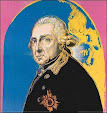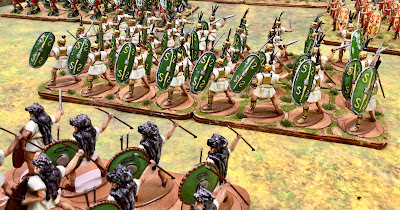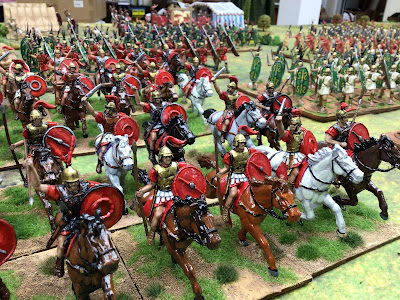 |
| 1/32 scale (54mm) Roman marching encampment. The manufacturer is TSSD (Toy Soldiers of San Diego) |
I want to have a Roman marching camp fort in my Historicon game in 2025. One of the games might feature a Roman assault on a Carthaginian city. The Romans would typically construct a fortress made of dirt and timber where ever they made an encampment while on the march. I wasn't looking forward to making my own camp walls out of pink insulation foam board and the one made by John Jenkins Designs is prohibitively expensive. I was pleased to find this fort model from Toy Soldiers of San Diego (TSSD) for a reasonable cost, relative to the other options. The model pieces come preprinted, but I think that they might need a different color of paint plus some dry brushing to finish it off.
The following two pictures provide a view of the interior of the camp:
My plan is to set the fort up on the back edge of the table and only represent the front and sides of the fort. The interior will have some Roman camp tents and vignettes and, of course, some soldiers to man the walls of the fort. The idea is that some of the game players will be attacking the Carthaginian city on one table while others are involved in attacking the Roman camp (which comes under attack from a Carthaginian relief force.
Both the Carthaginians and Romans set up walled camps while on the march so each side could have a fort on their back table. They march out of the camp and then deploy for battle. I will run multiple convention games at Little Wars and Historicon, so one day might have an assault on the city walls game, an assault on a marching camp, or some conventional set piece battles. Then, a second game on the day will have the reverse of the morning game, i.e. a set piece battle in the evening and a city assault in the morning game. Rinse and repeat for Friday and Saturday.
 |
| The front gate of the walled camp |
 |
| Some of the soldiers' tents inside the camp. |
 |
| Roman engineers use a groma device to survey the ground so that they can set up the location of the tents. These figures are from John Jenkins Designs. |
I have a 32-figure unit of Celts/Gauls on the painting table right now and hope to have these finished within the next week. Hopefully the Thanksgiving holiday will give me some spare time to devote to figure painting.













